Short version: the pitfalls won. Ten years on from the dawn of Twitter, we stand on a battlefield strewn with the corpses of dead slogans, with vacuous hashtags victorious. Clever headlines have been decapitated, replaced by formulaic ‘what happened next’ clickbait. Ideas lie choking on the floor, while brand storytellers patrol vague emotional territories, inviting the fleeing public
to join a conversation.
That may be overstating it. But something has gone wrong writing-wise when a brand like Stella Artois moves from ‘Reassuringly expensive’, an original insight that inspired 25 years of print and TV work, to #BeLegacy – a hashtag that no doubt makes the creatives working on the TV ads wince when they have to insert it at the end.
And something has gone even wronger when a brand like Andrex tires of ‘Soft, strong and very, very long’, a slogan that everyone of a certain generation can recite by heart, thanks to a nice puppy and some proper mass-media advertising – and instead starts a conversation about whether we #ScrunchorFold.
The irony is that, until social media came along, brands were good at being social. The best slogans got inside our heads, language and culture by being memorable and meaningful. Now brands are so keen to host a conversation that they have forgotten how to say something interesting. Some are afraid to say anything at all, for fear of being ‘called out’ by the moral majority. A ‘Reassuringly expensive’ today might lead to a ‘why do you hate poor people’ backlash.
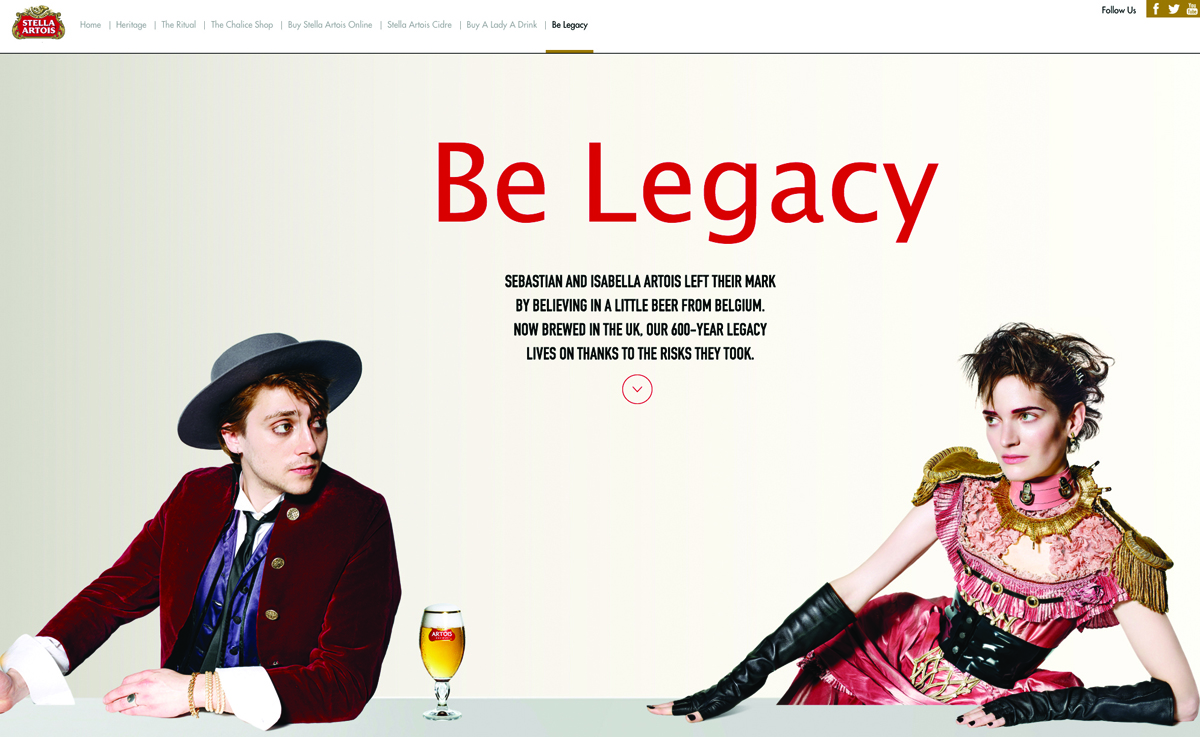
Stella Artois’ recent hashtag-influenced tagline ‘Be Legacy’ as featured on the company’s website, stellaartois.com
That’s the other annoying thing about social media – the way it has debased the language we all use, imposing an aggressive global dialect of ‘owning’, ‘slaying’ and ‘calling out’, while simultaneously infantilising us with exploding hearts, thumbs-up likes and countless emojis (which brands appear to believe are important).
BELOW: The Stella Artois #BeLegacy TV commercial
No wonder writers hate social media. Except that we obviously don’t. Social media has been great for writing. Twitter has brought copywriters out of the woodwork and into one big – I’ll use the word – conversation. And it has turned everyone into copywriters, requiring people to learn the art of saying something worthwhile in a short space – and, as a result, heightening people’s appreciation for the skill.
Social media has also created new forms of brand writing. While many brand Twitter accounts are full of committee-approved attempts to be topical, there are some notable exceptions. The Waterstones account (@WstonesOxfordSt) was started by Jonathan O’Brien while he was working on the shop floor, and became the most successful marketing campaign Waterstones has done. It also built a career for the writer, who now works at Innocent.
Writers of all kinds have benefited from the same effect. Brands have taken to hiring comedy writers to host their accounts, or having in-house writers signing off their tweets – an interesting development that humanises the brand and starts to break the fourth wall between brands and audience.
There have also been plenty of great social media-inspired campaigns – like the Old Spice choose-your-own-adventure game on Instagram (Wieden + Kennedy, Portland), or Unicef’s ‘Like us on Facebook, and we will vaccinate zero children against polio’ (Forsman & Bodenfors) – a pointed invitation to donate instead of liking. Most importantly, social media has made great writing more visible. Take last year’s street corner posters for homeless charity Depaul UK (Publicis London). A handful of people will have seen those in real life. But, according to the agency, millions saw them online.
BELOW: The Old Spice campaign which made clever use of Instagram’s image tagging function to allow Instagrammers to navigate their way through the story.
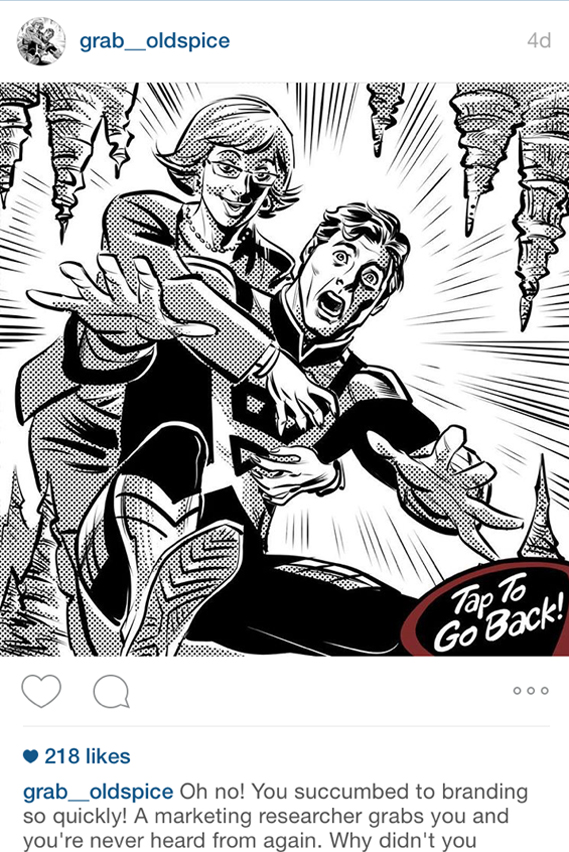
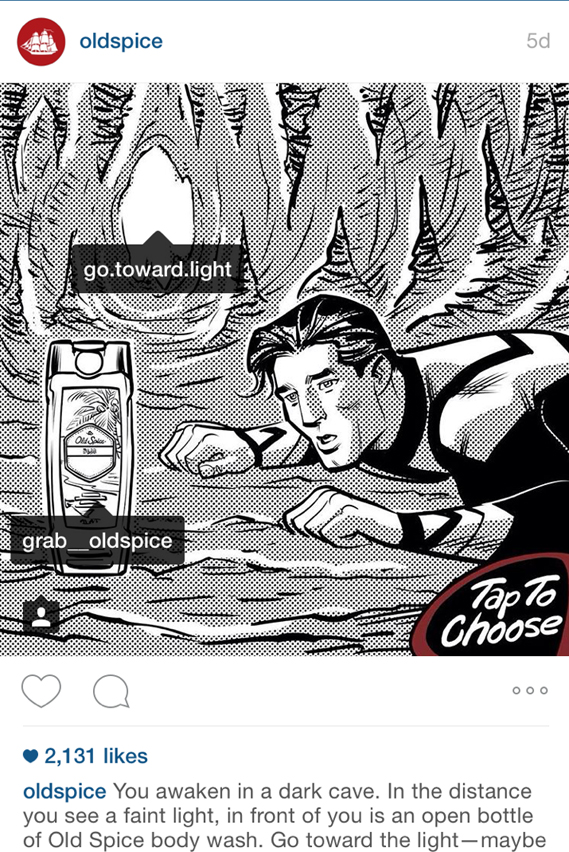
Great writing gets shared – and we’re sharing lots of it. Contrary to the lazy assertion that digital has created an illiterate, too-long-didn’t-read culture, it has actually increased the amount that most of us read. The internet is made of words -– tweets, status updates, blog posts, comments, articles, search terms – and we’re digesting more of them than ever. We’re just reading in a different way.
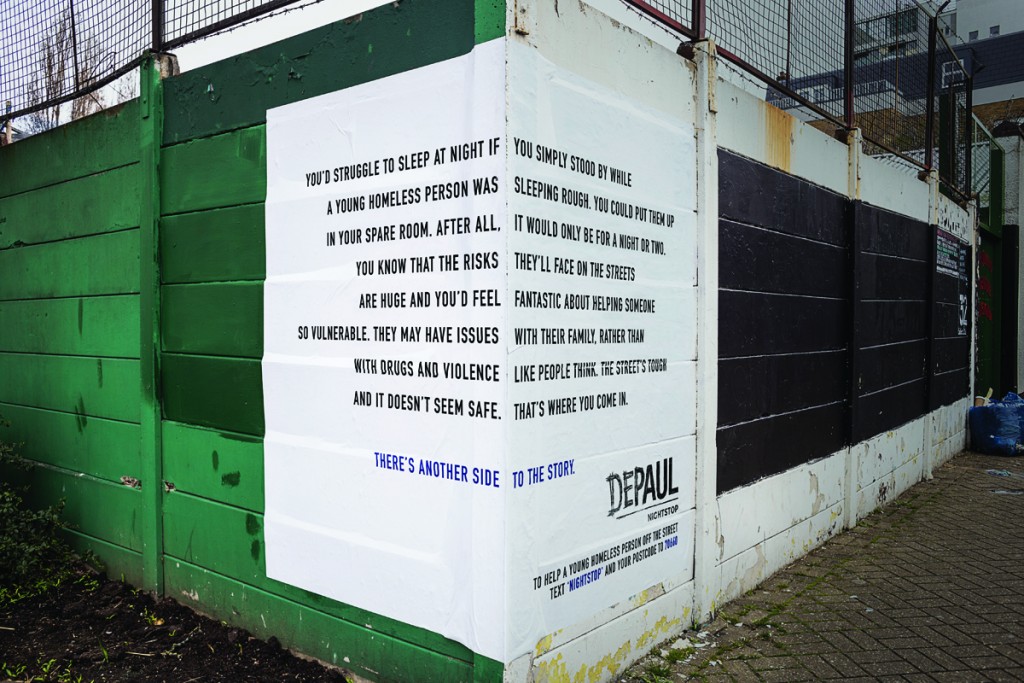
And that’s where it gets interesting. The overlap of writing and technology makes this an intriguing time to be a copywriter. Planner and writer Russell Davies wrote in Campaign recently about the rise of talking things – robots, computers, fridges, cars – which will be powered by a combination of writers and algorithmic learning. That will change the way brands think about words. A lot of it will be terrible – a spoken version of the zany packaging copy that fills our supermarkets. But some will be brilliant and new.
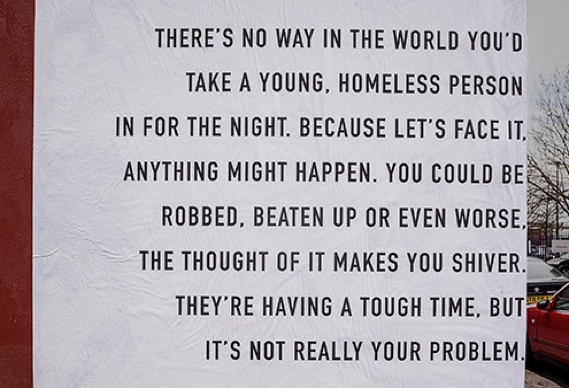
A campaign for homeless charity Depaul UK that went up on several street corners in London.
For encouraging evidence, look at Siri – one of the great writing stories of recent years, because it was executed with charm as well as usefulness. A voice like Siri doesn’t have to pretend to be a person, because it’s not a person – we know we’re talking to a machine and we still like it. That’s interesting territory for brands, because they have always had a problem with trying to talk like ‘real people’ even though we know they are fundamentally impersonal. In future, they could embrace being impersonal – and may find it liberating. (NB: there will be problems along the way – Microsoft’s ‘Tay’ teen chatbot was recently withdrawn after it learned to speak racist on Twitter.)
Then there is the rise of new, richer forms of writing. Because we’re reading so much online, there is the opportunity to mix the written word with other things – Gifs, audio, graphics – and to create dynamic text that changes as we read it. We might see new genres of writing emerging, including ‘live’ writing – currently confined to shared Google Docs and formats like LiveChat, but potentially a middle ground between writing and conversation.
There are also niche tools like Cleartext (by developer Morten Just) – a text editor that restricts you to the 1,000 most common words in the English language (inspired by the book Thing Explainer, which takes the same approach to explaining scientific phenomena). A lot of brands could benefit from some variation of that – especially when it comes to writing mission statements. Could there be a social media platform that only allows you to use the 1,000 most common words? Would it be more civil and interesting? Would some freak new dialect evolve? Businesses have been built on arbitrary writing restrictions before – look at Twitter.
Or don’t look at Twitter – you might see a stupid marketing campaign. As new technologies come along, the response by brands will continue to be mostly average or terrible, because 90% of things brands do is average or terrible – it always has been. But a lot of great stuff will happen too, and copywriters will be in the front line.
What happens next might actually amaze you.
Nick Asbury is a writer for branding and design and one half of creative partnership, Asbury & Asbury. See asburyandasbury.com and @asburyandasbury
Click here to read more about Stella Artois’s #BeLegacy campaign.
Click here to read more about the Depaul UK campaign.
This article is featured in our May 2016 issue that’s all about social media.
To buy the May/Annual issue click here.
To subscribe to Creative Review, click here.
